#saul chaplin
Text

Peter O'Toole and Producer Saul Chaplin
on the set of Man of La Mancha
Man of La Mancha (1972)
directed by Arthur Hiller
Peter O'Toole
Don Quixote de La Mancha / Miguel de Cervantes / Alonso Quijana
7 notes
·
View notes
Text

Composer/musical director Saul Chaplin (February 19, 1912 – November 15, 1997), pictured with Judy Garland on set of I COULD GO ON SINGING (1963)
22 notes
·
View notes
Text


Due to ideological differences Bob Hope was not a fan but upon hearing of Charlie Chaplin's passing Christmas Day 1977 said this:
"It was Bob Hope, of all people, who issued the pithiest, most heartfelt encomium to the man the world still knew as the Tramp: “We were fortunate to have lived in his time."
Another Fine Mess: A History of American Film Comedy - Saul Austerlitz
22 notes
·
View notes
Photo

Kay Kendall, Mitzi Gaynor, Gene Kelly, and Taina Elg in Les Girls (George Cukor, 1957)
Cast: Gene Kelly, Mitzi Gaynor, Kay Kendall, Taina Elg, Jacques Bergerac, Leslie Phillips, Henry Daniell, Patrick Macnee. Screenplay: John Patrick, based on a story by Vera Caspary. Cinematography: Robert Surtees. Art direction: Gene Allen, William A. Horning. Film editing: Ferris Webster. Music: Cole Porter, Saul Chaplin.
It should have been better. It had Gene Kelly's dancing, George Cukor's direction, Cole Porter's song score, and a performance by the wonderful Kay Kendall -- two years before her untimely death. I'm tempted to blame the failure of this musical on Mitzi Gaynor, a performer to whom I've never felt attracted, or to the now long-forgotten Taina Elg. According to one source, it was planned to star Leslie Caron, Cyd Charisse, Jean Simmons, and Carol Haney, each of whom might have given a lift to the movie. Kelly seems cranky and tired -- it was his last film for MGM -- and the Porter songs are completely forgettable. Cukor's direction is workmanlike: Despite My Fair Lady (1964) and the Judy Garland A Star Is Born (1954), musicals were not his forte.
1 note
·
View note
Video
youtube
ANNIVERSARY SONG - Al Jolson - Saul Chaplin
Piano solo for the moment ... Misha
0 notes
Text
WK 3: Finding Credible Sources
Specific Techniques and Crafts 5x
Illustration
Typography
Collage
Printing
Photography
Illustration - Untitled Cartoon, Saul Steinberg.

Steinberg, S. (1946). Untitled Cartoon [woman writing under water]. University of Georgia Libraries.
I thought this illustration was interesting but simple. It captures a woman in the bath writing under the water, which takes a humorous turn in the illustration. But also because many illustrations and the form of drawing first then digitally drawing them (present day illustration)
Printing - What is Print Making ?
What is Printmaking?. (n.d.). The Met. https://www.metmuseum.org/about-the-met/collection-areas/drawings-and-prints/materials-and-techniques/printmaking#:~:text=Printmaking%20is%20an%20artistic%20process,available%20techniques%20to%20include%20screenprinting.
Photography - Book: Photography Fifth Edition : A Cultural History
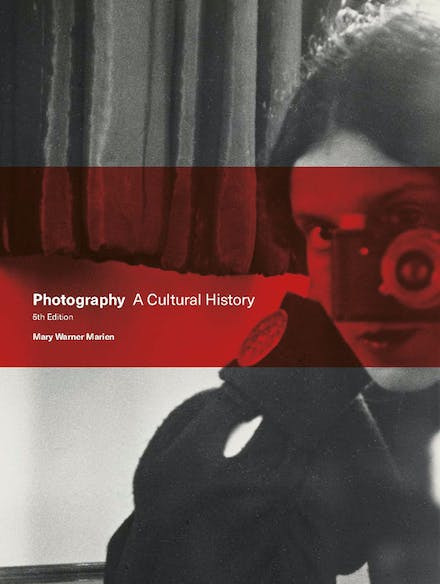
Warien, M, W. (2021). Photography Fifth Edition : A Cultural History. Laurence King Publishing.
I thought this book would be relevant as it it discusses the invention of photography, photography as a form of art, imaging of the social world, photography and its modernity, through the lens of culture etc.
Typography Book - Thinking with Type, Ellen Lupton
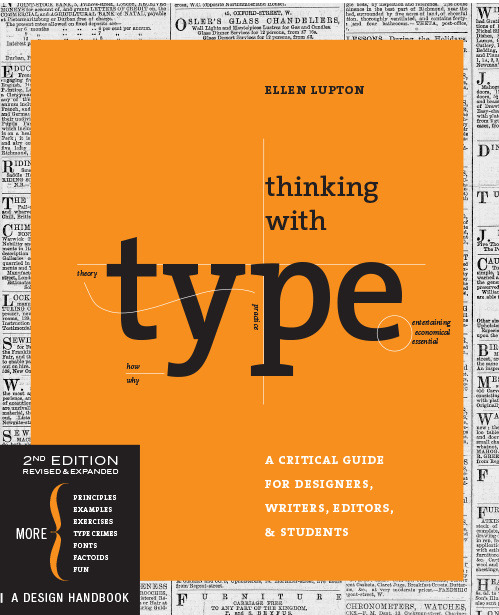
Lupton, E. (2009). Thinking with Type: A Critical Guide for Designers, Writers, Editors, and Students. Princeton Architectural Press.
This book provides you a clear and focused understanding and guidance on how letters, words and paragraphs should be aligned, spaced, ordered and shaped. There are free pdfs online, this will allow me to help gain further insight on typography.
Collage - Almost Home, Arturo Hererra, 2001
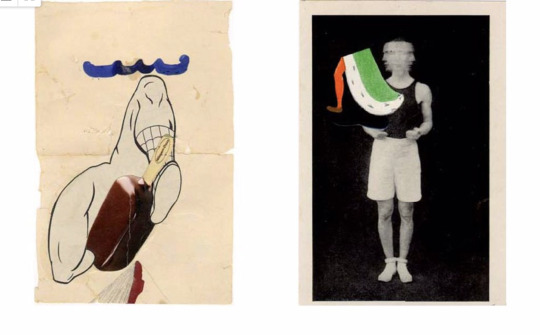
Hererra, A. (2001). Almost Home [digital art, born digital, contemporary, technology] . Dia.
This collage, the twin posts serve as duality that contrasts with eachother than complimentary, such as life and death, positive and negative, good and evil etc. The artists invites us to "become a player" of these fundamentals.
2. Key Themes, Ideas and conversation 5x
Cultural Identity
Personal Identity
Expression/emotion
Memory/nostalgia
Childhood
Cultural Identity - Book: Heritage and Identity, Engagement and Demission in the Contemporary World
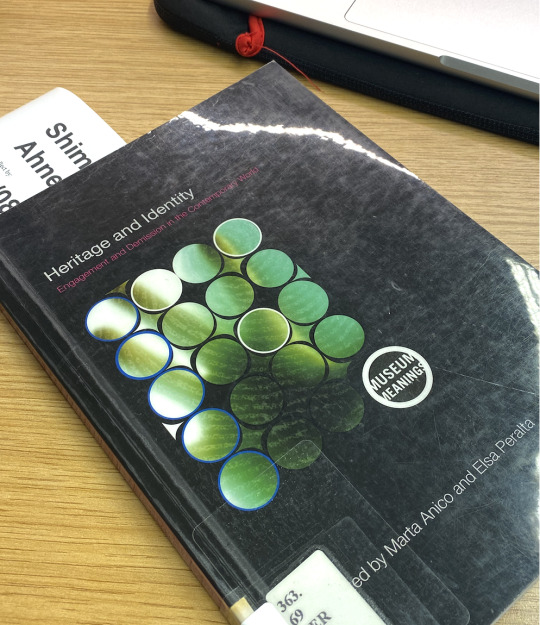

Anico, M., & Peralta, E. (2009). Heritage and Identity. Routledge.
This book explores the ever complex ways in how our heritage or cultural background plays a huge role in how we represent ourselves.
It quotes, "Heritage is more than a simple legacy from the past, and incorporates all elements, past and present, that have the ability to represent particular identities in the public sphere."
Personal Identity - The Concept of Personal Identity, article
Rieber, S. (1988). The Concept of Personal Identity. Vol. 58, No. 3. pp. 581-594. https://doi.org/10.2307/2653757
I quite liked this article as it gave a detailed and succinct insight into what exactly personal identity is and how we define it.
Memory/Nostalgia - The Persistence of Memory, Salvador Dali, 1931

Dali, S. (1931). The Persistence of Memory. The Museum of Modern Art: Painting and Sculpture.
This was an interesting art piece to look at. There are symbols or time, motifs and themes within the painting that emphasizes memories are strong and although time fades, its hard to forget.
Expression/Emotion - Gender and Emotion Expression: A Developmental Contextual Perspective, article
Chaplin, M, T. (2015). Gender and Emotion Expression: A Developmental Contextual Perspective. 10.1177/1754073914544408
As I was doing a bit of research around emotion, I found that there was a distinct difference in how males and females show or not show their emotions.
Childhood - Childhood growth and socioeconomic outcomes in early adulthood evidence from the inter-war United States, Article
Roberts, E., Helgertz, J., Warren, R, J. (2022). Childhood growth and socioeconomic outcomes in early adulthood evidence from the inter-war United States. VOL. 28, NO. 2, 229–255. https://doi.org/10.1080/1081602X.2022.2034658
This article discusses how childhood growth and development earlier, can affect them in the later life.
3. Specialist Subject Knowledge 5x
Kiwi-asians/ asians in "foreign" countries (we think its home but other people may think its not)
Spirituality
Sustainable fashion
Bicultural
Design Process/thinking
Bi-Culturalism -
Klang, P. (n.d.). Asian Customs and Values, Preservation within American Communities. https://asiasociety.org/education/asian-customs-and-values
This essay discusses ideas of bicultural identity, traditional values and customs from root cultures, and how they are still practiced and celebrated. it also addresses the ways in which ethnic community influence the lives of the people it serves including residents, as well as how individuals of diverse cultural backgrounds can contribute to the lives of those around them.
Process of Type -
Sipp, T. (2016). Type Hunters [documentary]. Doc & Film International.
Hustwit, G. (2007). Helvetica [Film]. Gary Huswit.
Helvetica is a classim film to watch for designers like me. The film is about typography, graphic design and global visual culture.
Kiwi-Asians - I know my roots are Indian but my thinking is Kiwi
Hussain, Y (2019) I know my roots are Indian but my thinking is Kiwi: hybridisation, identity and ‘Indians’ in New Zealand. South Asian Diaspora. 11 (1). pp. 1-15.
This article explores the identity of south asians in NZ and that South asians may feel they are "hybridised" with kiwi. Although, this article focuses on South Asians and I am east asian, I thought there were points within this article that discussed interesting points that I could relate to.
Sustainable Fashion - The True Cost, Documentary
youtube
Morgan, A. (2015). The True Cost [Documentary]. Untold Creative; Life is my Movie Entertainment.
This is a great documentary to watch that informs all the impacts of fast fashion, socially, politically, culturally and environmentally.
Design Process/Thinking - Design and Thinking - documentary
Tsa, M. (2012). Design & Thinking [Documentary]. Muris Media.
This documentary explores the idea of design thinking. Thinking about how they engage organizations and to think about the chaging landscape of businesses, culture and society.
4. Creatives working in the environments, social, cultural and political context 5x
George Haijan
Tyrone Ohia
Ayesha Green
Choi Gi Seok
Pushpin Studio
George Haijan - Webpage
Lowcher, J. (2022). By Day By Night, George Hajian. Design Assembly. https://designassembly.org.nz/2022/05/30/by-day-by-night-george-hajian/
This is a good primary source, it is an interview on George Haijan. It gives you more deep insight into his work and how he works etc.
Tyrone Ohia - Youtube Video
youtube
(unknown.). (2021, Nov 1.). Toi Tū Toi Ora Artist Profile: Tyrone Ohia [Video]. Youtube. https://www.youtube.com/watch?v=6i0LwXNSMus&ab_channel=AucklandArtGalleryToioT%C4%81maki
I liked how unlike articles, biographies, thorugh a youtube video and an artist profile of Tyrone Ohia, it gives you more insight into what kind of person he is, through the much more expressed tone of voice, way of speaking etc,.
Ayesha Green - Webpage
Ayesha Green. (n.d.). Auckland Art Gallery Toi o Tamaki. https://www.aucklandartgallery.com/explore-art-and-ideas/artist/11265/ayesha-green
This webpage allows brief information on the artist and allows you to click through her work. I quite like how as an artist she explores the cultural and political factors in her work, in contrast to her soft and organic illustration.
Choi Gi Seok - Artist Cho Gi Seok’s Exhibition “Coexistence” Speaks to Both Sides of His Personality, Website
Beckert, M. (2022). Artist Cho Gi Seok’s Exhibition “Coexistence” Speaks to Both Sides of His Personality. WMagazine. https://www.wmagazine.com/culture/cho-gi-seok-artist-fotografiska-new-york-exhibition-coexistence
His work is very poetic and beautiful but in his works a lot cultural themes show.
Push Pin Studio -
Zaiden, S. (2016). Glaser Milton (1929-). The Bloomsbury Encyclopedia of Design. Bloomsbury Academic. DOI: 10.5040/9781472596161-BED-G035
Push pin studio is an influential graphics design company, it moves away from the modern and non-sentimental graphics design work.
0 notes
Photo
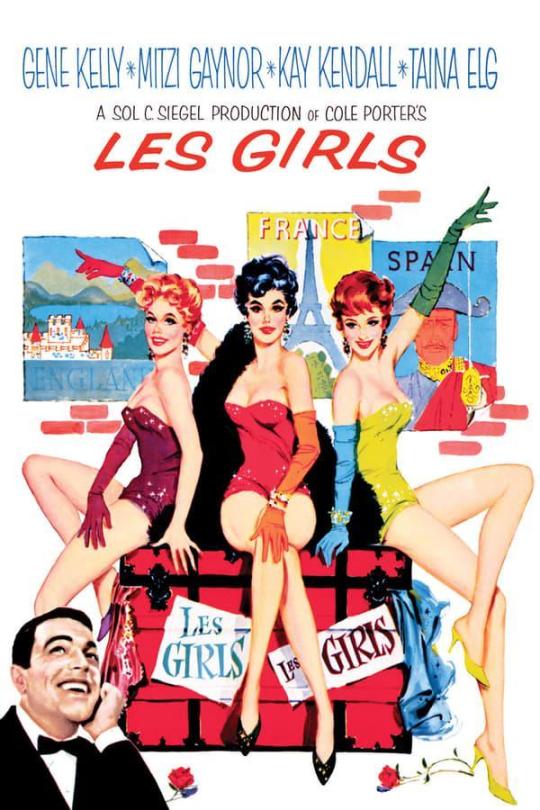
Les Girls - George Cukor (1957)
Poster
#les girls#stanley donen#1957#1950s#poster#gene kelly#mitzi gaynor#kay kendall#taina elg#sol c siegel#cole porter#vera caspary#saul chaplin#mgm#musical#comedy#john patrick
10 notes
·
View notes
Photo

“Every peach out of reach is attractive...”
Producer Saul Chaplin and director Robert Wise confer with actor Daniel Massey during filming of the “Forbidden Fruit” number in STAR! (1968). The number was filmed over several days from 28 April-2 May 1967 on Stage 14 at 20th Century Fox Studios on the “Vaudeville Theatre” set designed by Boris Leven.
Determined to do not only his own singing but also piano playing in STAR!, Daniel Massey undertook three months of intensive training in preparation. In the commentary for the 1993 laserdisc release, Massey explained that:
“So often you see actors who are impersonating composers and you never see their hands actually on the keys but I thought it was terribly important that that should happen. Bob (Wise) agreed and we found this sainted man, Jack Latimer, who sat with me month after month and Jack Latimer taught me to do it” (“Commentary” 1993; see also West 1967).
Bonus bit of trivia:
Massey’s piano teacher, Jack Latimer, was a prominent accompanist who had worked with the likes of Dinah Shore and Betty Hutton. A decade or so after helping Massey with his Coward impersonation, Harper performed honours as one of two accompanists at a star-studded memorial tribute to Noel Coward hosted by the University of Southern California in 1980 (Thomas 1980; USC 1981). The other pianist at the event was Harper MacKay, a noted Hollywood composer and musician who, among many credits, worked on Julie’s 1965 TV special, The Julie Andrews Show and again later on Darling Lili (1970). Intensifying the “six degrees” connections even further, Harper MacKay’s wife, Margery MacKay, dubbed the singing voice of Peggy Wood for the “Climb Ev’ry Mountain” number in The Sound of Music (1965).
Sources:
“Commentary” STAR! 1968/1993 [Laserdisc]. Los Angeles: Twentieth Century Fox Home Entertainment.
Thomas, Kevin 1980. “Tribute to Coward at Town and Gown” The Los Angeles Times. 26 February: pp. VI-1,8.
USC 1981. Remembering Noel Coward. Los Angeles: Friends of the USC Libraries.
West, Alice Pardoe 1967. “Behind the Scenes: Daniel Massey.” TV Etcetera Magazine. 28 May: 10.
Copyright © Brett Farmer 2021
#julie andrews#Daniel Massey#STAR!#1968#classic film#old hollywood#musical#noel coward#behind the scenes#Robert Wise#Saul Chaplin#20th century fox
4 notes
·
View notes
Video
youtube
It’s very clear
Our love is here to stay.
Not for a year,
But forever and a day.
“Love Is Here to Stay” from An American in Paris (1951) - performed by Gene Kelly and Leslie Caron; music by George Gershwin and lyrics by Ira Gershwin; arranged by Johnny Green and Saul Chaplin
Originally appearing in The Goldwyn Follies (1938), “Love Is Here to Stay” is the final song ever composed by George Gershwin and appears here in An American in Paris. Here, it is set to a lush orchestral arrangement. This film is a collection of some of the Gershwins’ best songs set to an original plot where three artist friends are struggling to get by in the City of Lights. When Gene Kelly’s and Georges Guétary’s characters both fall in love with Leslie Caron, all the trouble begins
An American in Paris was nominated for eight Academy Awards, including Best Film Editing and Director (Vincente Minnelli). The film danced away with six Oscars: Best Scoring of a Musical Picture (Green and Chaplin); Costume Design, Color; Art Direction, Color; Cinematography, Color; Original Screenplay (Alan Jay Lerner); and Best Picture.
#An American in Paris#Gene Kelly#Leslie Caron#George Gershwin#Ira Gershwin#Johnny Green#Saul Chaplin#Vincente Minnelli#OST#Oscars#nightcap#31 Days of Oscar
2 notes
·
View notes
Text
Febrero 20, 2021
Our United State
vimeo
It just seemed wonderful, and my life wasn’t wonderful.
Quizá no haya mejor modo de decir lo que le debemos a los musicales que este recuerdo de Donen de sus nueve años, cuando vio a Fred Astaire en Flying Down to Rio. Cierto que esto mismo -esa capacidad de fungir de sustituto, o de proporcionar un falso alivio de lo real- es lo que tantas veces se ha deplorado de ellos. Pero si los musicales no pueden salvarnos la vida, ¿cómo podrán hacer que la perdamos? En cuanto mí, sí, a veces, los musicales me salvan la vida.
Give a Girl a Break, por ejemplo, viene salvando mi vida desde la madrugada de ayer. Es un musical claro y transparente, su estructura de hierro se adivina desde el comienzo, con triples sucesiones y simetrías apenas quebradas que no traiciona jamás. De los conflictos, subsiste solo aquello sin lo cual la trama no podría siquiera tener lugar. Son conflictos -casi todos, o todos los que más importan, por lo menos- dados por las cosas mismas, circunstancias que hay que resolver y que a veces enfrentan a los personajes, pero que nadie está dispuesto a permitir que pasen a mayores. Nadie se enoja, ni se enreda por mucho tiempo (lo que contrasta con la producción y el rodaje de la película, donde parece que Bob Fosse y Gower Champion se sacaban chispas y que se definieron dos bandos enfrentados, el que los Champion formaban con Debbie Reynolds y el de Stanley Donen y Bob Fosse).
Pero las películas de Donen son sin excepción una fuente de alegría constante -por lo menos, todas las que vi-. Eso no pasa con todos los musicales que siguen la regla. Lo que tengan de administrativo no los iguala. No viene sencillamente de ahí su capacidad de hacer que veamos todo maravilloso, el contraste escandaloso con nuestras vidas, el engaño (que la auténtica liberación no podía venir de ahí es algo que ya sabíamos). Hace falta más. En Give a Girl a Break, cierto, los trucos visuales son una causa de excitación, desde las pantallas partidas, hasta la Suzy [Debbie Reynolds] de miniatura que baila en la cabezota de Bob [Bob Fosse], o el movimiento inverso en el Balloon Dance, que suspende las reglas de la física. Sin embargo, excitación no es lo mismo que alegría, y si la película nos pone a reír y a aplaudir como niños frente a la pantalla no es por los trucos, sino porque los trucos confirman la alegría que viene de otro lado. En primer lugar, claro, de la danza, de los cuerpos de los bailarines que ya habían desafiado ellos a la ley de gravedad, sin ayuda de trucos. Miren a Bob, Ted [Gower Champion] y Leo [Kurt Karsznar] en Nothing is Impossible, uno de los primeros números musicales. El corazón de la película está ahí: es la sugerencia (aunque haya habido que contrarrestarla) de que quizá tengamos que romper todas las leyes, no solo las de la física. El corazón alegre de la película es el descubrimiento de que si nada es imposible, solo no lo es en el mundo hecho de la confianza indestructible que circula entre los tres hombres; solo no lo es no en el mundo en que ya viven, sino en el que tienen que crear juntos. La alegría viene también de las diferencias entre los tres, de las de Leo/ Karsznar, especialmente; de la intuición de que ninguna semblanza más perfecta sería, no obstante, mejor. Aceptamos pronto esa alegría y enseguida su mejor -y, para las reglas del show business, más improbable- corolario: la completa falta de jerarquía entre los tres, e incluso entre los cuatro, porque tenemos que agregar a Felix Jordan [Larry Keating], el productor menos malhumorado y tiránico y más paciente de la historia de las películas, que admite por igual las opiniones de todos y consiente llevar a cabo las propuestas que le parece, vengan de quien vengan -el cadete, la estrella, o el autor de la obra-.
Con las mujeres, todo es distinto. En el primer número, Give a Girl a Break, vemos a las chicas haciendo sus cosas de todos los días, o en sus prácticas de baile, mientras leen en el diario un aviso para cubrir el papel protagónico del musical que también se llama Give a Girl a Break (la película, el musical de la ficción y la canción, o el número, se llaman igual). Se trata precisamente de la obra que Jordan está preparando en un teatro de Broadway, con Ted como director y protagonista masculino, de la que Leo es autor y Bob, entusiasta cadete. Las aspirantes aparecen en una secuencia, repleta de maravillas, donde -si recuerdo bien- primero, a cada una le corresponde un plano separada de las demás, después la pantalla se divide y vemos a varias chicas mirando a su vez a la cámara y, por fin, las tres candidatas con probabilidades bailan juntas, pero como si no se vieran una a las otras, ignorándose, cada cual en su mundo. Desde ese momento, habrá una inevitable competencia entre ellas (salvo que renuncien a su deseo de protagonizar el musical, deberán competir), pero que sin embargo carece de toda agresividad. Faltan las zancadillas y deslealtades que Hollywood suele atribuir a estas rivalidades y hasta vemos muestras de afecto y admiración. A pesar de esto, no hay ni habrá entre ellas una verdadera relación, no existe entre las chicas nada parecido a la comunidad que había entre los varones. Tampoco sienten aquella solidez que ellos se aseguraban mutuamente y sin fisuras y de la que nos parecía que emanaban su alegría y la de la película. Madelyn [Marge Champion], Suzy y Joanna [Helen Wood] no están seguras de cuál es su lugar en el mundo, ni viven en la confianza de que nada sea imposible. Para ellas, la alegría es más bien algo todavía a conquistar y que cada una buscará por su cuenta. Y la película quizá sea, más que nada, eso: mostrarnos cómo ellas, en esos días de pruebas, novedades y decisiones, van conquistando más alegría y más confianza. Una conquista en la que los hombres -que mientras ellas se transforman, permanecerán relativamente estables y confiados- y, con ellos, el amor tendrán un papel decisivo. Algo, sin embargo, también se transforma para ellos, y algo fundamental. De ahora en más, aunque sus posiciones no cambien y también persista ese modo que tenían de resolver las cosas entre sí, las mujeres han entrado a la escena y vivirán junto a ellos. De cómo se las arreglen para esa vida dependerá que la alegría sea para todos, que se haga común. Quizá, no nos gusten del todo los arreglos que hacen para poder vivir juntos, para trabajar y para amarse, pero no es poco fundar un nuevo estado y darle una constitución. ¡A ver!
Gracias, Stanley Donen.
cm
Give a Girl a Break, Stanley Donen, 1953
82 minutos, EE. UU., inglés
Canciones: Burton Lane (música), Ira Gershwin (letras)
Dirección musical: André Previn, Saul Chaplin
Coreografías: Stanley Donen, Gower Champion, Bob Fosse
#Give a Girl a Break#Stanley Donen#Gower Champion#Bob Fosse#Larry Keating#Musicales Hollywood#Ira Gershwin#André Previn#Saul Chaplin#Marge Champion#Helen Wood
2 notes
·
View notes
Photo

Peter O'Toole and Producer Saul Chaplin
on the set of Man of La Mancha
Man of La Mancha (1972)
directed by Arthur Hiller
Peter O'Toole
Don Quixote de La Mancha / Miguel de Cervantes / Alonso Quijana
8 notes
·
View notes
Text



Composer and musical director Saul Chaplin (February 19, 1912 – November 15, 1997), pictures with a few of his famous collaborators
23 notes
·
View notes
Photo


The Star of Star! celebrating her 32nd birthday with associate producer Saul Chaplin (left), and director Robert Wise (right) in 1967.
30 notes
·
View notes
Photo

While he was not a fan of Charlie Chaplin’s due to ideological differences said this when he passed Christmas Day 1977:
It was Bob Hope, of all people, who issued the pithiest, most heartfelt encomium to the man the world still knew as the Tramp: “We were fortunate to have lived in his time.
Another Fine Mess: A History of American Film Comedy - Saul Austerlitz
21 notes
·
View notes
Note
5, 10, 15, 20, 25, 30, 35 and 40!
5. Would jump out of a planeLucifer, absolutely. Devyn is a close second.
10. Listens to everything but common senseLucifer, Devyn, Samuel Viviani, Sandalphon, Nettle, and Honeydew
15. Would get a tattoo on a whimDevyn would totally get a tattoo on a whim!
20. Talks in song lyrics Asmodeus, sometimes he’ll sing those song lyrics, if prompted to.
25. Loves their parentsAsmodeus, Cheryl, Devyn, Jeanne, Ida, Dione, and Mahlah
30. Likes hugs Porcelain, Asmodeus, Dione, Mahlah, Sammael, Saul Walker, Periwinkle, and Uriel
35. Could be a stand up comedian Lucifer, Leverrett Chaplin, Belphegor, Caria, Saul Walker, Sandalphon, Devyn, and Apollyon
40. Will kiss someone to steal their wallet Samuel Viviani, Caim, Melchom, Belphegor, Leviathan, and Caria
#lucifer#devyn#samuel viviani#sandalphon#nettle#honeydew#asmodeus#cheryl noble thompson#jeanne cormier#ida#dione myer#mahlah#leverrett chaplin#belphegor#caria#saul walker#apollyon#caim#melchom#leviathan#asks 4 me#filth ocs
2 notes
·
View notes
Photo







Summer Stock (Charles Walters, 1950)
Cast: Judy Garland, Gene Kelly, Eddie Bracken, Gloria DeHaven, Marjorie Main, Phil Silvers, Ray Collins, Nita Bieber, Carleton Carpenter, Hans Conried. Screenplay: George Wells, Sy Gomberg. Cinematography: Robert H. Planck. Art direction: Cedric Gibbons, Jack Martin Smith. Film editing: Albert Akst. Music: Conrad Salinger; songs by Harry Warren, Mack Gordon, Saul Chaplin, Harold Arlen, Ted Koehler.
Summer Stock seems almost like a warmup for that string of great MGM musicals that followed: An American in Paris (Vincente Minnelli, 1951), Singin' in the Rain (Stanley Donen, Gene Kelly, 1952), and The Band Wagon (Minnelli, 1953). It doesn't have as good a song score as they do, and its screenplay lacks the wit that Alan Jay Lerner, Betty Comden, and Adolph Green provided for them. It has two great numbers: Judy Garland's "Get Happy" and Gene Kelly's solo in which he does miraculous things with a squeaky floorboard and a sheet of newspaper. But mostly it seems to be remembered as Garland's last film for MGM as she descended into the emotional wilderness of her later years. She was returning to the screen after being fired from Annie Get Your Gun (George Sidney, 1950), but she asked to be let out of her contract with MGM after completing Summer Stock. Aside from Kelly and Garland, there's not much else to recommend about the film. Eddie Bracken plays his usual nebbish with a sinus condition -- a variation on the character he played in Hail the Conquering Hero (Preston Sturges, 1944), and Phil Silvers does some overstated clowning. The plot is nonsense about a Broadway tryout being staged in the barn on the farm owned by Garland's character, with the usual gags about city slickers trying to feed chickens and milk cows. Garland's character is engaged to Bracken's, and Kelly's is having a fling with Garland's sister, played by Gloria DeHaven. Naturally, by film's end the sisters have switched partners. But the film belongs to Garland and Kelly whenever they're on screen, and a thumb ready for the fast-forward button to those moments gets a good workout.
2 notes
·
View notes